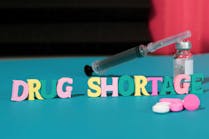Supply chain taskforce helps ramp up medical supply production during COVID-19
The Supply Chain Stabilization Task Force is executing a whole-of-America approach to address limited supply of critical protective and life-saving equipment. Through a four-prong approach of Preservation, Acceleration, Expansion and Allocation, the Federal Emergency Management Agency (FEMA) is bringing the full capacity of the federal government for support.
The task force’s primary effort is to increase the flow of medical supplies and equipment to healthcare workers on the front line. Through the National Response Coordination Center, the task force is working to find critical resources to meet urgent demand as well as increase the overall level of surge support to “hot spots” as they arise. In addition, the task force is engaging manufacturers, distributors and healthcare networks to increase supply chain long-term.
The Supply Chain Stabilization Task Force is executing a four-pronged approach to rapidly increase supply today and expand domestic production of critical resources to increase supply long-term.
Preservation
Preservation to extend the life of PPE and other supplies. Developing guidance to prioritize the allocation and the most appropriate use of supplies for specific needs are critical components of this strategy.
The task force is in the process of developing and verifying techniques to clean and recycle products. This line of effort also includes developing guidance to prioritize the allocation and the most appropriate use of supplies for specific needs, critical components of this strategy.
The task force is also working to expand equipment resources through the Preservation line of effort. The FDA issued an Emergency Use Authorization (EUA) for ventilators on March 24, which allows anesthesia gas machines and positive pressure breathing devices to be modified for use as ventilators. The new guidance will also assist health care personnel on how to use other ventilators, like CPAP devices for sleep apnea, with COVID-19 patients in respiratory distress, as well as on shelf life of existing ventilators.
Acceleration
Acceleration of the commercial market is required to help meet the urgent demand. Manufacturers are ramping up production and shipment of critical resources and have extended operating hours to increase production well above pre-COVID-19 levels.
To expedite purchasing, FEMA issued a request for quotation for vendors who have needed medical equipment and supplies to sell to the agency. FEMA is also expediting movement of critical supplies from the global market to medical distributors in various locations across the U.S. As an example of this effort, Project Airbridge was created to shorten the amount of time it takes for U.S. medical supply distributors to get Personal Protective Equipment and other critical supplies into the country and to their respective customers.
FEMA is doing this by covering the cost to fly supplies into the U.S. from overseas factories, cutting the amount of time it takes to ship supplies from months to days. Each flight contains critical PPE (gloves, gowns, goggles, and masks) in varying quantities.
As part of the current agreement with distributors, 50 percent of the supplies on each plane are targeted by the distributors to customers in areas of greatest need. These areas are determined by HHS and FEMA based on CDC data. The remainder is being infused into the broader U.S. supply chain. Prioritization is given to hospitals, health care facilities, and nursing homes around the country.
In some cases, the federal government may purchase some of the supplies to provide to states with any identified and unmet needs. To address the anticipated ventilator shortage across the nation, the task force has also implemented a strategy to leverage the strengths of the commercial industry Including numerous vendors, such as General Electric, Phillips, Medtronic, Hamilton, Zoll, ResMed, Hillrom and Vyair, to produce 20,000 ventilators over the next two months with the potential to add 100,000 by end of June. This represents a significant increase in velocity as the normal annual market is 30,000 per year.
Expansion
Expansion of the industry is also taking place. Manufacturers are enhancing production capacity with additional machinery, and in some cases re-tooling assembly lines to produce new products needed. As an example of this work, the Food and Drug Administration (FDA) is providing information for manufacturers on adding production lines or alternative sites, like automobile manufacturers, for making more ventilators during the COVID-19 public health emergency.
In addition, the task force is working through over 350 leads to match American businesses who have excess raw materials, workforce or factory production capacity combined with an overwhelming desire to provide their support to the national response effort.
Task force members are actively working to facilitate the creation of private sector partnerships to pair companies that have volunteered excess factory production capacity, the talents of their workforce and access to their raw material supply chains with critical supply manufacturers who have the expertise in producing PPE, ventilator and other needed equipment. The creation of these partnerships to align capacity with know-how will unleash the potential engine of our national private sector and help overcome the supply shortfalls.
Allocation
Allocation of critical resources based on data-informed decisions to get the right quantities of supplies to the right place, at the right time.
Because FEMA owns very little medical supplies and the commercial marketplace supports the healthcare and first responder communities today, there is a need to provide commercial supply chain data to FEMA. To more effectively adjudicate resources throughout the nation and private industry, a National Resource Prioritization Cell was established to unify government and private industry prioritization recommendations which will inform federal, state and private sector operations.
The Supply Chain Task Force is working with the major commercial distributors to facilitate the rapid distribution of critical resources in short supply to locations where they are needed most. This partnership enables FEMA and its federal partners to take a whole-of-America approach to combatting COVID-19. FEMA, in coordination with other federal agencies, is providing distributors with up-to-date information on the locations across the country hardest hit by COVID-19 or in most need of resources now and in the future. The distributors have agreed to focus portions of their distributions on these areas in order to alleviate the suffering of the American people. Working together, we are able to efficiently distribute these vital resources to hospitals, nursing homes, long-term care facilities, pre-hospital medical services, state and local governments, and other facilities critical to caring for the American people during this pandemic.





